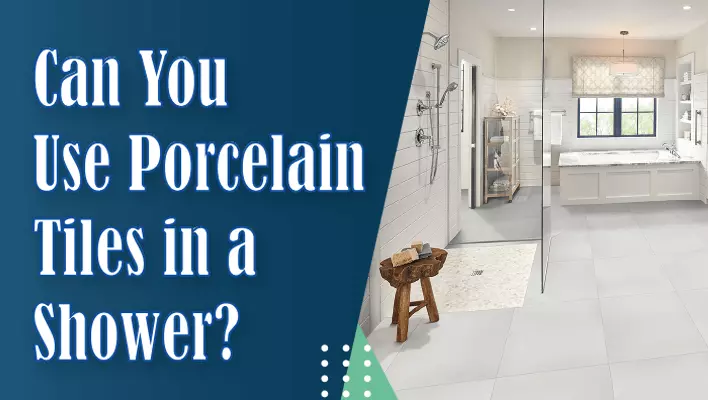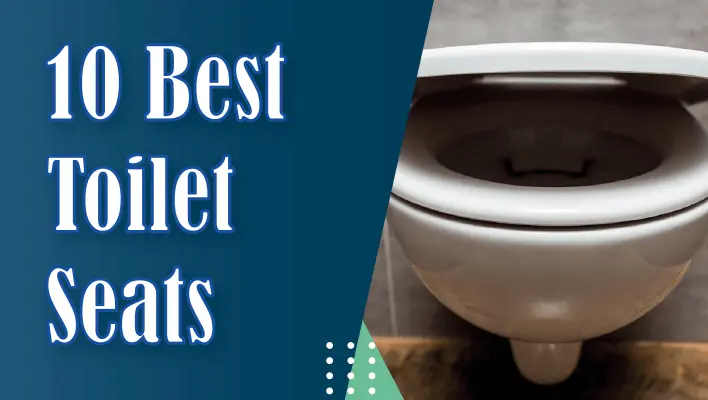It’s time to design your bathroom in a modern style with excellent material. ‘Shower tile’ uniquely flourish your bathroom. But people wonder what type of shower tile they should use because there are many shower tiles. These types include stones, porcelain, ceramic, and glass tile, adding beauty to your bathrooms.
Certain performance variables are involved, but for the most part, you can choose a tile material first, and then refine it in terms of the size, shape, color, and arrangement you choose. To keep things simple, selecting suitable tile for showers begins with concentrating on where the tile will be laid. The mostly used tiles are ceramic and porcelain tiles.
Can you use porcelain tile in a shower? Yes, you can use it. All times are good and give your bathroom and shower a modern look, but porcelain tile is best. That’s why in this post, I have described porcelain tile. Continue reading this post to learn why porcelain is the best of all.
Also Read: Can Ceramic Tile Be Used In A Shower?
How Porcelain Made?
Porcelain forms when sand, clay, and other natural materials are heated in a kiln. When burned in the kiln, porcelain tiles should withstand high temperatures. Porcelain’s particular sturdiness and water resistance are due to the considerable effort that goes into its manufacture. Of course, the additional cost of burning porcelain at such high temperatures raises the price.
PEI Rating

The PEI rating (Porcelain Enamel Institute rating) is a straightforward method to determine which tile is appropriate for your home based on how frequently the place you are tiling.
Tiles are rated from 0 to 5 based on their hardness:
- PEI 0 – No foot traffic (wall tiles)
- PEI 1 – Very light traffic (bathroom)
- PEI 2 – Light traffic (bathroom & bedroom)
- PEI 3 – Light to moderate traffic (suitable for most domestic floors)
- PEI 4 – Moderate to heavy traffic (suitable for domestic floors & some commercial uses)
- PEI 5 – Heavy traffic (suitable for all domestic & commercial uses with heavy footfall)
Porcelain tiles are often rated between 3 and 5.
Benefits of Using Porcelain Tiles in a Shower
These are benefits of porcelain tile that urge you to use this tile.
Resistance to Water and Moisture
Highly resistant to water makes porcelain the best of all. The absorption rate of porcelain is 0.5% making it ideal for use in damp situations. When selecting materials for damp areas, such as a shower, water exposure is the most crucial point to consider. For this reason, porcelain tiles are a good alternative. Furthermore, because porcelain shower tiles absorb less moisture, they are not damaged by steam.
Easy Maintenance
Unlike other tiles, Porcelain tiles can be utilized in locations apart from the shower, such as the shower sides and the tub. It is because porcelain tiles are easily maintained, preventing the buildup of materials that could compromise shower quality nearly impossible. Usually, regular cleaning is sufficient to guarantee the tiling’s lifespan.
Durability
Porcelain is a dense material that makes it highly durable. Its ability to keep the water away keeps the tile in good condition. It can withstand critical potential and other forces. Porcelain is so long-lasting that it is frequently utilized in high-traffic commercial areas.
Variety in Appearance
When we talk about the appearance of tiles, porcelain has different colors and textures. In the market, porcelain is available in granite, slate, marble, and hardwood forms. Porcelain tiles are offered in both glazed and unglazed finishes. The glaze gives the tiles an extremely stunning, clean appearance. You can choose any size, shape, and pattern of porcelain tile to give your shower and bathroom a unique look.
Is There Any Downside to a Porcelain Tile?
All things have advantages and disadvantages as well. Therefore, before choosing, we should consider the disadvantages of porcelain tiles for showers.
- All the tiles are slippy when wet, so look for ‘slip-resistance’ tiles. The material of tile makes it slippy or slip-resistance.
- Ask an experienced person to install porcelain tiles in your bathroom.
- Porcelain tiles are more costly than ceramic tiles.
The Difference between Ceramic and Porcelain Tiles
To begin, glance at the color on the side of the tiles. Porcelain tiles have a consistent color throughout, whereas ceramic tiles do not. As a result, cracks in porcelain are much less visible than cracks in ceramic tiles.
The weight is another important contrast between porcelain and ceramic. Ceramic tiles are always heavier than porcelain tiles. Porcelain tiles are also less elastic and harder to cut.
If you still can’t detect the difference between these tiles, run your fingers across the non-glazed exterior of the tile. Porcelain tiles have a softer feel than ceramic tiles since they are constructed of extremely fine material.
Final Verdicts
Porcelain tiles for the shower are a great choice. Because of its high stability and water resistance, porcelain is the best alternative for shower tiles. It is not to say that slip-resistant ceramic is not a choice. Depending on your financial situation and artistic vision, ceramic tiles may be an excellent alternative for your bathroom.























